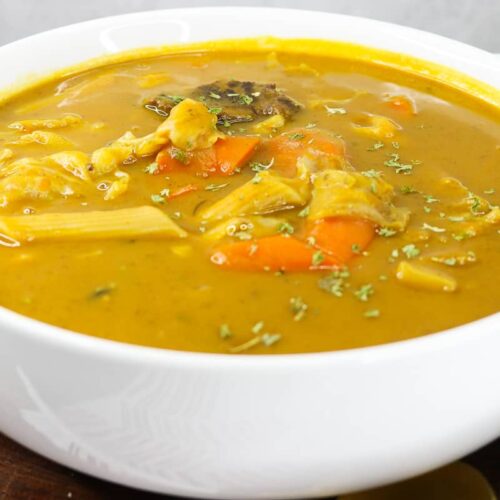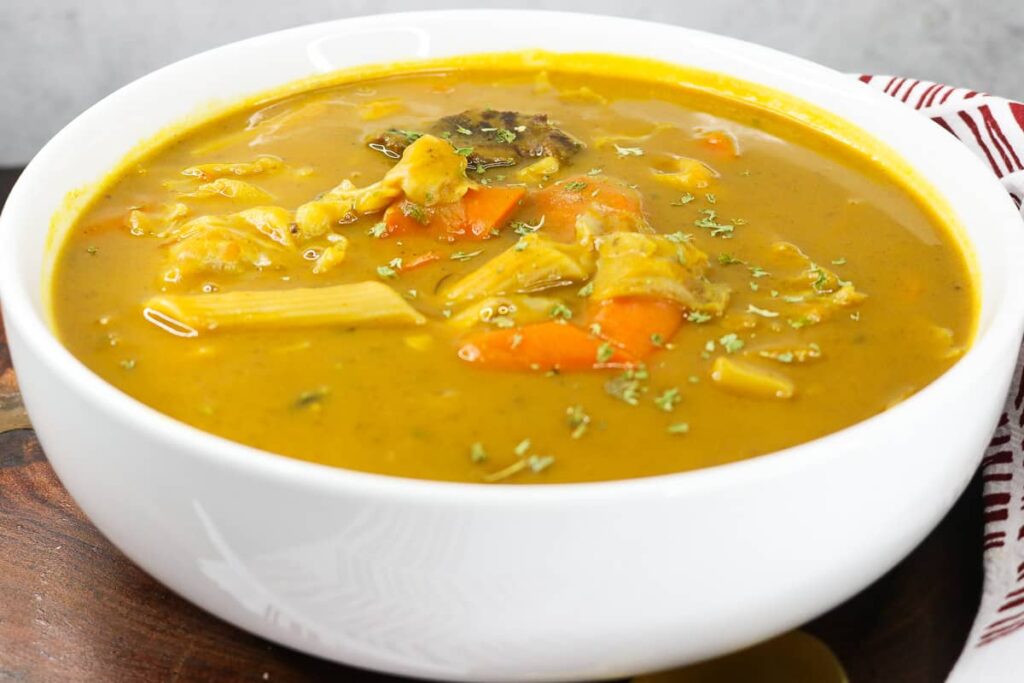
Soup Joumou
The history of pumpkin soup begins with the celebration of Haitian Independence in 1804. On Jan. 1, 1804, Haitians worked together to create a unique soup to celebrate their independence from the French Colonists. Until that time, the Colonists believed that the blacks under their rule could never work together to create anything. Today, the traditional pumpkin soup known as “soup joumou,” is made and served to friends and family in Haiti in remembrance of their fight for freedom.
Notes
Ingredients
- 1 bunch fistful watercress
- 1 bunch spinach
- 1 juice lemon squeeze the juice of of one lemon
- 1 cubed malanga cut into cubes
- 1 cubed potato cut into cubes
- 1/2 box Ziti half way cooked
- 1 cup leak
- 1 cup carrots peeled and sliced
- 2 cup celery chopped
- 1 scotch red bonnet pepper chopped thick slices
- sctoch green bonnet pepper chopped thick slices
- 5 whole cloves
- 6 sprig parsley
- 1 pinch black pepper
- 2 individual scallions chopped
- 4 sprig thyme
- 3 pounds pumpkins/squash peeled
- 6 tbsp olive oil extra virgin
- 1 cube maggie bouillon
- 3 pounds Beef chunks trimmed of all fat and cut into 2-inch cubes
- 1/2 stick butter
- 1 large white onion chopped
- 2 tbsps salt
- 1 pound cabbage sliced fine and chopped
- 1 whole hot pepper do not cut
Significance
- While under French Colonial rule, Haitians were limited to eating a bland bread soup. They would not have been permitted to eat such an extravagant meal comprised of pumpkin, beef stock and other vegetables. This unique soup was created as a symbol of unity in the face of adversity. It was served to everyone at the first Independence celebration and Haitians continue this tradition today.
Features
- One unique feature of the soup is the use of limes or sour oranges that are rubbed on the beef prior to cooking it. This gives the soup a slightly sour tang, which is considered a metaphor for the bittersweet legacy Haitians have shared since their independence from the Colonists. An authentic version of the soup also utilizes “picklese,” a spicy pickling vinegar, which originates from Haiti.
Geography
- Pumpkin soup is now made around the world, though it is predominantly made in Haiti during its Independence celebration and in the United States during Thanksgiving. The Haitians who left the nation after the Revolution brought their recipe for pumpkin soup to the United States. The recipe has been modified over the years and the ingredients vary, depending upon what is available locally.
Misconceptions
- While Native Indians in America did eat pumpkin, they didn’t invent pumpkin soup. They ate the pumpkin after it was cut into strips and roasted. The American Colonists observed how the Indians used this vegetable and began incorporating it into their diets. Pumpkin soup wasn’t mentioned in any books in America until the mid-1800s.
Effects
- People who visit Haiti may not understand the significance of the Independence celebration. They may think there isn’t much to celebrate since Haiti has experienced economic and social decline ever since the 1804 Revolution. However, Haitians believe the fight for equality isn’t over yet. They believe the pumpkin soup gives them courage to persevere over oppression, both now and in the future.
Facebook Comments

